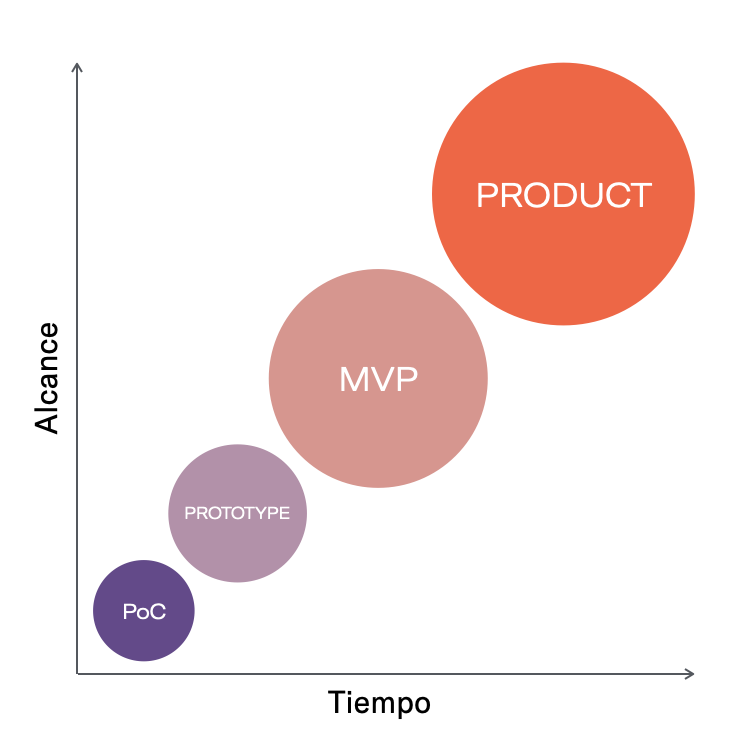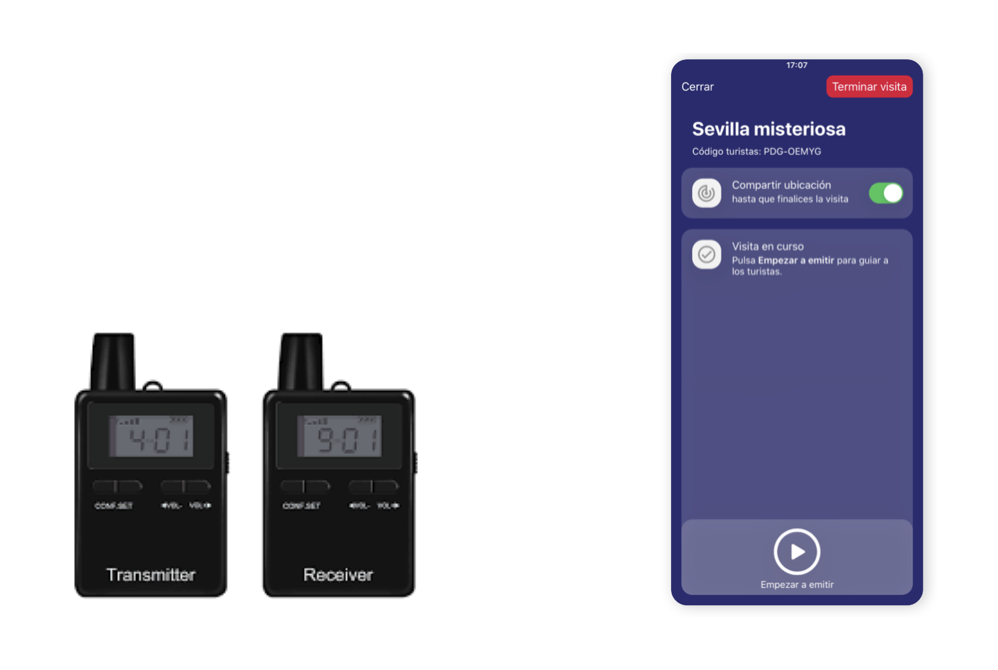Revealing Statistics
Data shows that approximately 90 % of startups fail.
The reason number one startups fail is a misunderstanding of market demand in 42 % of cases.
This is because in most cases, emerging businesses tend to jump directly to the product design and development phase to get to market quickly with the consequent risks of failure that this implies.
When do you need a proof of concept for your product?
When a new product hits the market, it usually fits into these two assumptions: either it follows in the footsteps of other similar applications, so the market-fit is proven, or it is a completely defective product.
In the latter case, a proof of concept is essential as a first step before venturing to finance a project that is not aligned with the market or not properly tested. In the first case, although it doesn´t seem necessary at first, in order to stand out you will need to implement some disruptive functionality so you will have to prove its necessity and that is aligned with the market.
A proof of concept in app development: definition
A proof of concept – in the context of app development -, also known as PoC (proof of concept), is a methodology that allows us to verify that the idea or assumption we have about the software is viable. Therefore, it is about testing that the app can work as we have thought (or making the necessary adjustments) in real life before starting the design and development phase.
The proof of concept is not a product, but an exercise in technical understanding of the feasibility of the idea. We must be able to understand if our project can go ahead with the least possible investment. Admittedly, this sometimes involves implementing the solution in a rudimentary way to verify that the product can be usefully exploited by the end user.
Depending on the solution to be tested, the proof of concept can take several forms. A technical document can be useful, but also, as we mentioned before, a very basic demonstration or a presentation. At this point it is not necessary to invest in the design of the app or in code development. But we must emphasize the technical specifications and the need, if any, for third-party products that enable the proper functioning of our application.
Difference Between Proof of Concept, Prototype, and MVP
The proof of concept, as a previous step to designing and developing an app, can easily be confused with other concepts such as a minimum viable product (MVP) or a prototype. For a product expert, these nuances are very important, so we are going to do a preliminary review of these concepts so as not to get confused.

Proof of Concept
The main objective of a proof of concept is to check the technical feasibility of the solution.
The PoC serves as an empirical exercise to understand the operation of the project, thus a clear objective must be defined from the beginning and its achievement will give us sufficient confidence in the solution that we are going to build.
Therefore, a PoC is essential to demonstrate to partners or investors that the business idea works.
Prototype
The prototype puts the focus on seeing how the design and interaction of the product turns out.
Creating a prototype allows you to get a dynamic design of the mobile application and get an idea of what it consists of in a short time.
The result is a prototype of the mobile solution that allows us to demonstrate everything that the product can do. Therefore, in this case, and unlike the PoC, the investment is reusable when the app design stage is reached.
Minimum Viable Product (MVP)
The MVP seeks to build a version of the product that meets the core needs of the user. The objective, therefore, is to create a product with sufficient characteristics to receive feedback from the market.
Therefore, in this case, the hypothesis is already tested with the launch of a real product on the market. This product, to meet the MVP conditions, must be “minimal” because it only contains the essential functionality and “viable” because it has been tested to be valid for the end user.
Benefits of validating your app with a proof of concept
At this point you should already be clear if your product needs a proof of concept and the main differences with other
with other concepts that also validate the product for different purposes. So now we are going to focus on the benefits of carrying out a proof of concept before the design phase of the mobile application.
Ensure feasibility before launch
The purpose of our proof of concept (PoC) will be to demonstrate that the idea is technically feasible and can be built. In addition, it will indicate the correct technical direction so that the app achieves its purpose, analyzing external dependencies and assessing the need for third-party products.
Understand the product
The PoC serves as an empirical exercise to understand the operation of the project, therefore if a clear objective is defined from the beginning, it will allow us to realize the limitations, advantages and disadvantages of the solution and will help us to prioritize the functionality more intelligently. .
Mitigate the risk
Achieving proof of concept as a first step before development will give us enough confidence in the solution that we are going to build. Knowing that we have chosen the right path will reduce uncertainty regarding costs and feasibility and will ensure that the investment is not destined for a product that is going to be a sure failure after its launch.
Convince investors
Even if you carry out the proof of concept as the first step of the project, the road ahead is still long and you will probably need external financing. This pre-test demonstrates that you make grounded decisions and understand the necessary budget by having solid evidence that you are on the right track.
Success case: how to do a proof of concept for apps
In this case, a company that organizes tourist tours wanted to do without the transmitting and receiving devices that are usually used for tourists to listen to the guide during guided visits.
This innovative challenge needed to technically validate that any device other than the guide’s and tourist’s own mobile phone could effectively be set aside to carry out guided tours. Therefore, our team recommended to the client an initial investment dedicated only to a proof of concept so as not to invest in development until the viability of the solution was assured.
In this case, a communication simulator was created without design that allowed the client’s idea to be validated and to know, with less uncertainty, the cost of the project and its chances of success. From there we create a live audio streaming solution that only needs the user’s mobile device.

Conclusion
Therefore, a PoC is essential to demonstrate to partners or investors that the business idea works. In the ocean of apps that stores have become, having a disruptive functionality or an innovative business idea is already almost a basic premise to stand out and that is why it is increasingly necessary to resort to a proof of concept before design and Mobile solution development.





